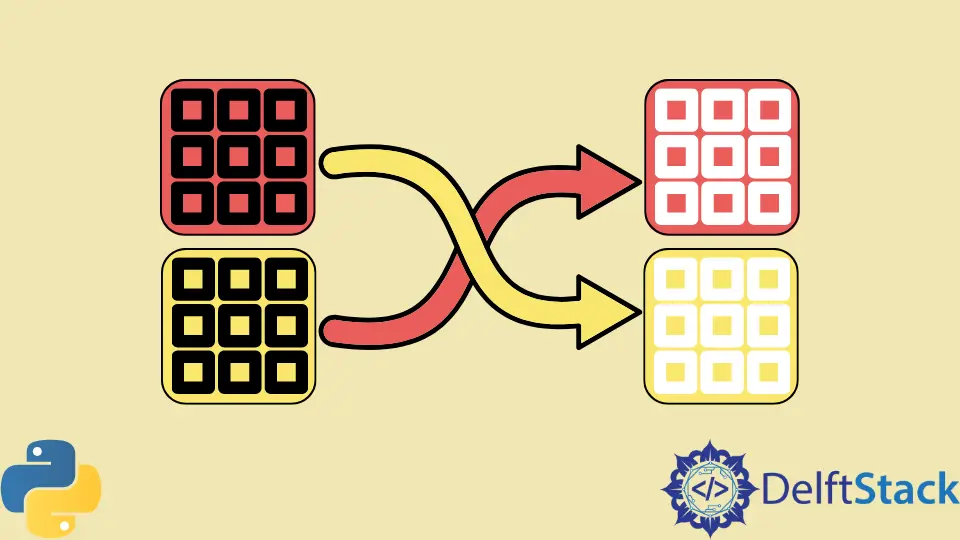在 Python 中重组数组
Muhammad Waiz Khan
2023年10月10日

在本教程中,我们将探讨在 Python 中对数组进行重组的各种方法。数组的重组意味着重新排列数组中元素的位置。数组重组的应用之一是在模型训练中,我们需要对数据集进行重组以提高模型的训练质量。它也可以用于统计学的许多应用中。
在 Python 中使用 random.shuffle() 方法对数组进行重组
random.shuffle() 方法接收一个序列作为输入并对其进行重组。这里需要注意的是,random.shuffle() 方法并不返回一个新的序列作为输出,而是对原始序列进行重组。因此,有效的输入序列只能是可变的数据类型,如数组或列表等。
random.shuffle() 方法只对一维序列有效。下面的示例代码演示了如何在 Python 中使用 random.shuffle() 来重组一个数组。
import random
import numpy as np
mylist = ["apple", "banana", "cherry"]
x = np.array((2, 3, 21, 312, 31, 31, 3123, 131))
print(x)
print(mylist)
random.shuffle(mylist)
random.shuffle(x)
print(x)
print(mylist)
输出:
[ 2 3 21 312 31 31 3123 131]
['apple', 'banana', 'cherry']
[3123 21 312 3 2 131 31 31]
['banana', 'apple', 'cherry']
在 Python 中使用 sklearn 模块的 shuffle() 方法对一个数组进行重组
sklearn.utils.shuffle(array, random_state, n_samples) 方法将具有相同第一维度的可索引序列如数组、列表或数据框等作为输入,并返回作为输入提供的重组序列的副本。
sklearn.utils.shuffle() 并不改变原始输入,而是返回输入的重组副本。输入可以是单个或多个序列。random_state 参数用于控制数字的随机生成。如果它被设置为某个整数,则该方法每次都会返回相同的重组序列。n_samples 代表样本数,它的默认值等于输入默认值的第一维,不应大于输入数组的长度。
注释
如果输入是 2D,
sklearn.utils.shuffle() 方法将只对行进行重组。下面的示例代码演示了如何在 Python 中使用 sklearn.utils.shuffle() 方法来获取一个重组后的数组。
from sklearn.utils import shuffle
import numpy as np
x = np.array([[1, 2, 3], [6, 7, 8], [9, 10, 12]])
y = ["one", "two", "three"]
z = [4, 5, 6]
print(x)
print(y)
print(z)
x, y, z = shuffle(x, y, z, random_state=0)
print(x)
print(y)
print(z)
输出:
[[ 1 2 3]
[ 6 7 8]
[ 9 10 12]]
['one', 'two', 'three']
[4, 5, 6]
[[ 9 10 12]
[ 6 7 8]
[ 1 2 3]]
['three', 'two', 'one']
[6, 5, 4]